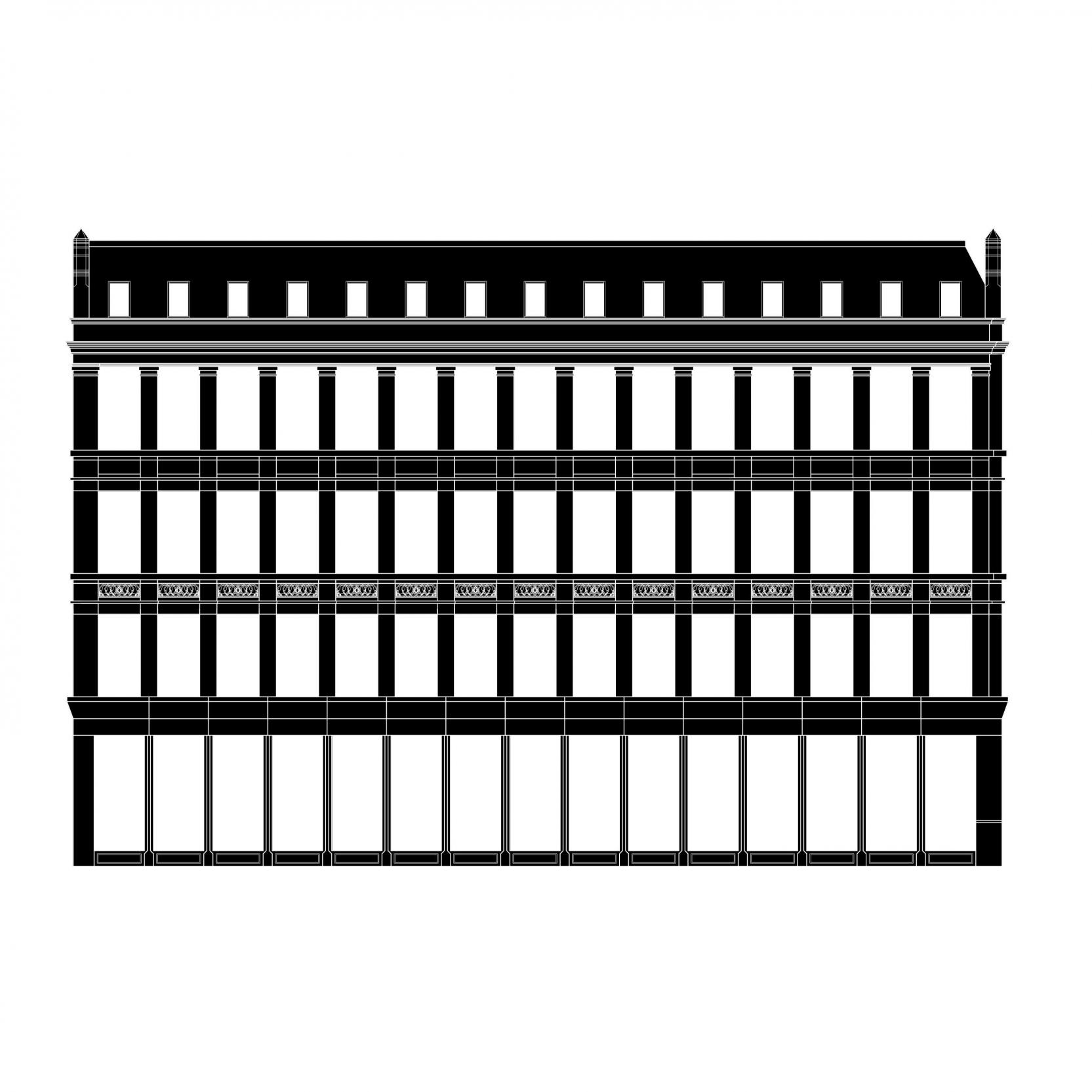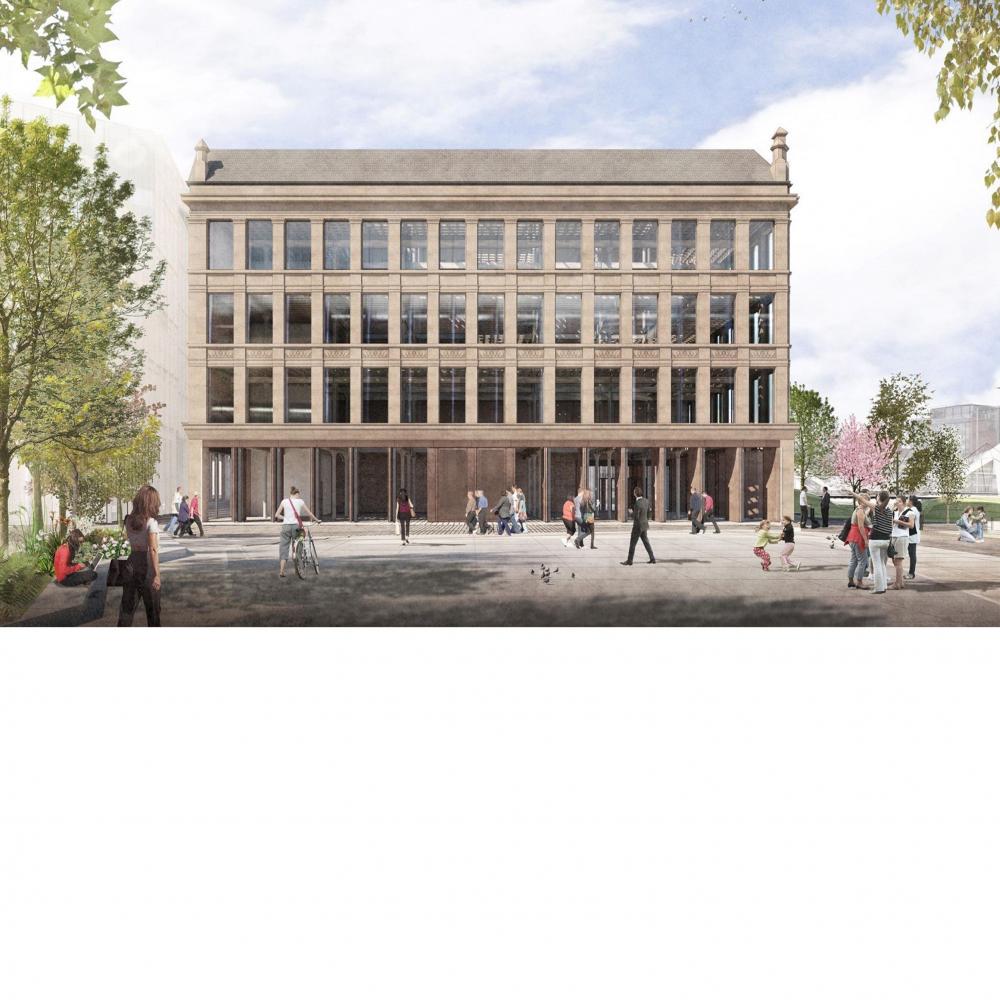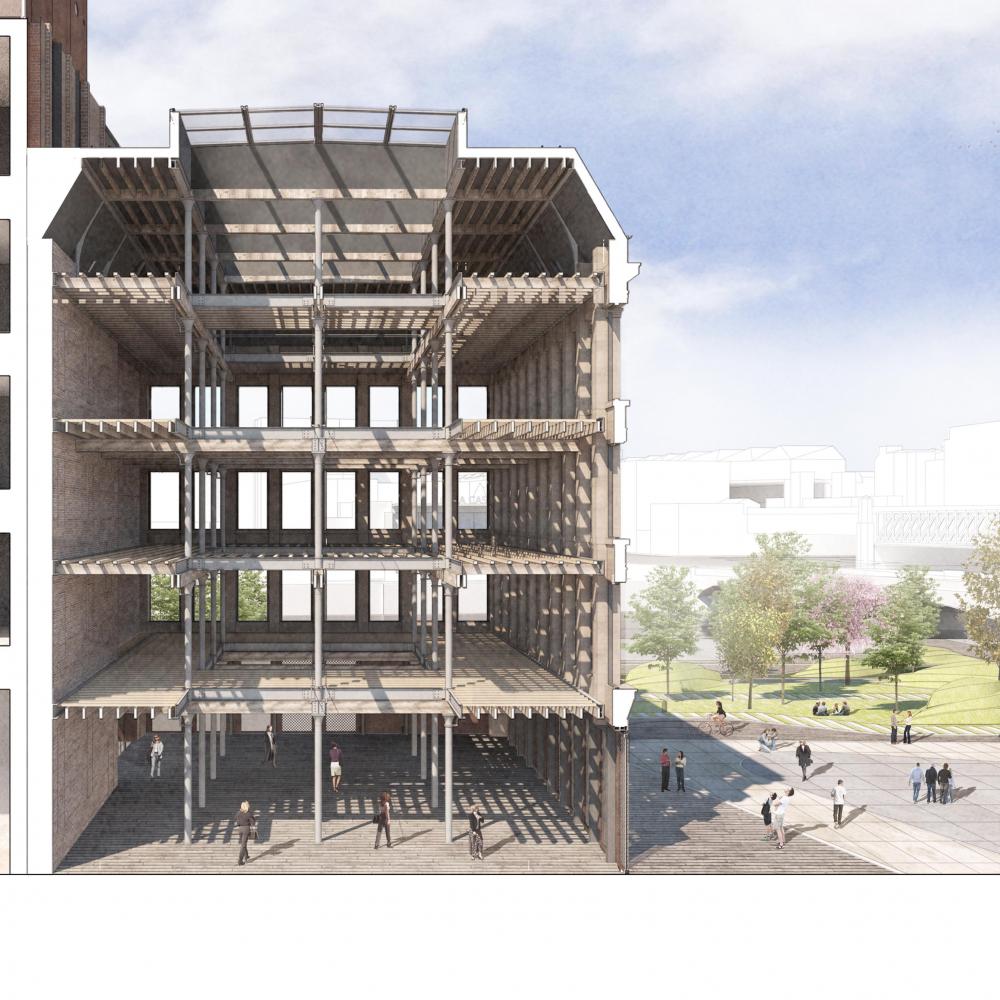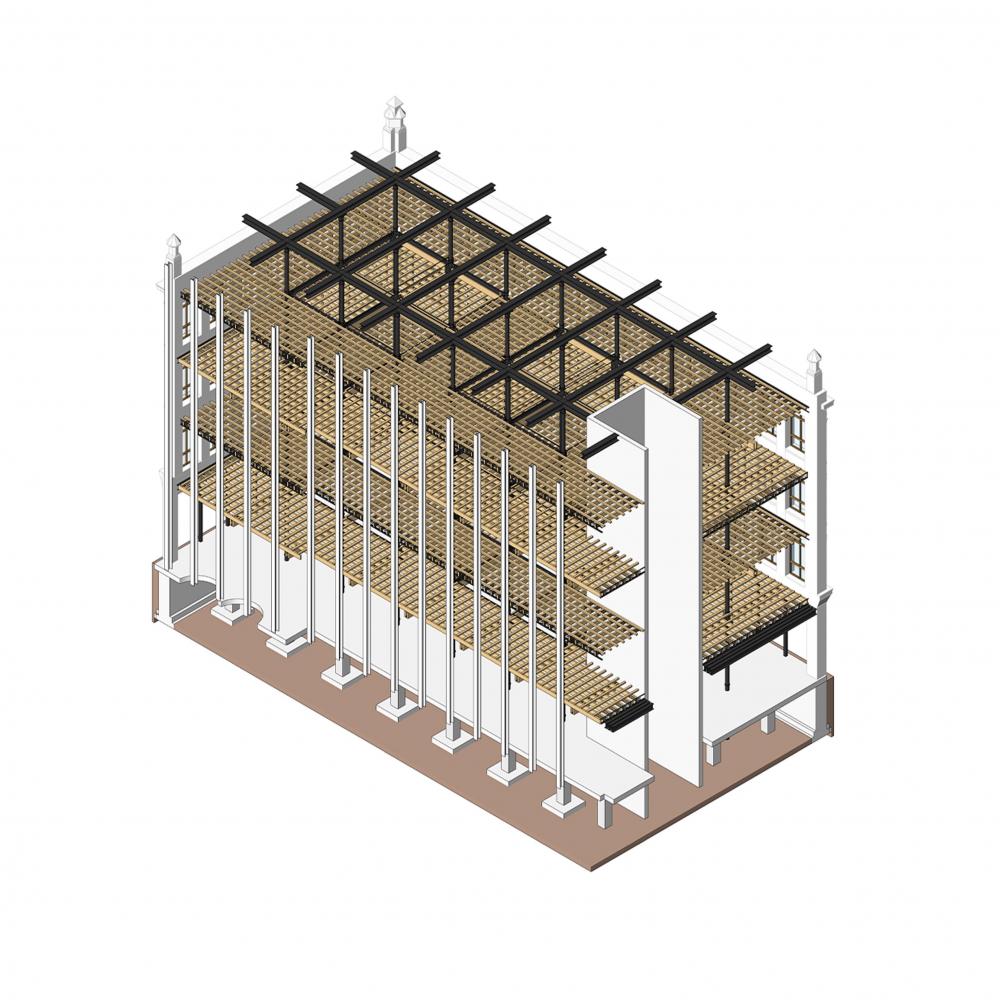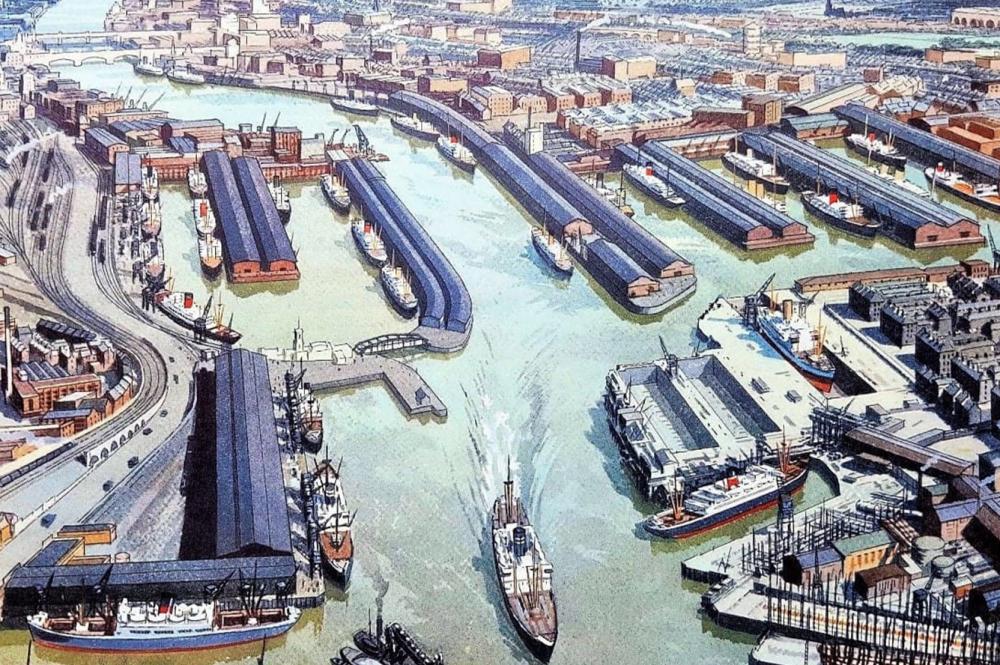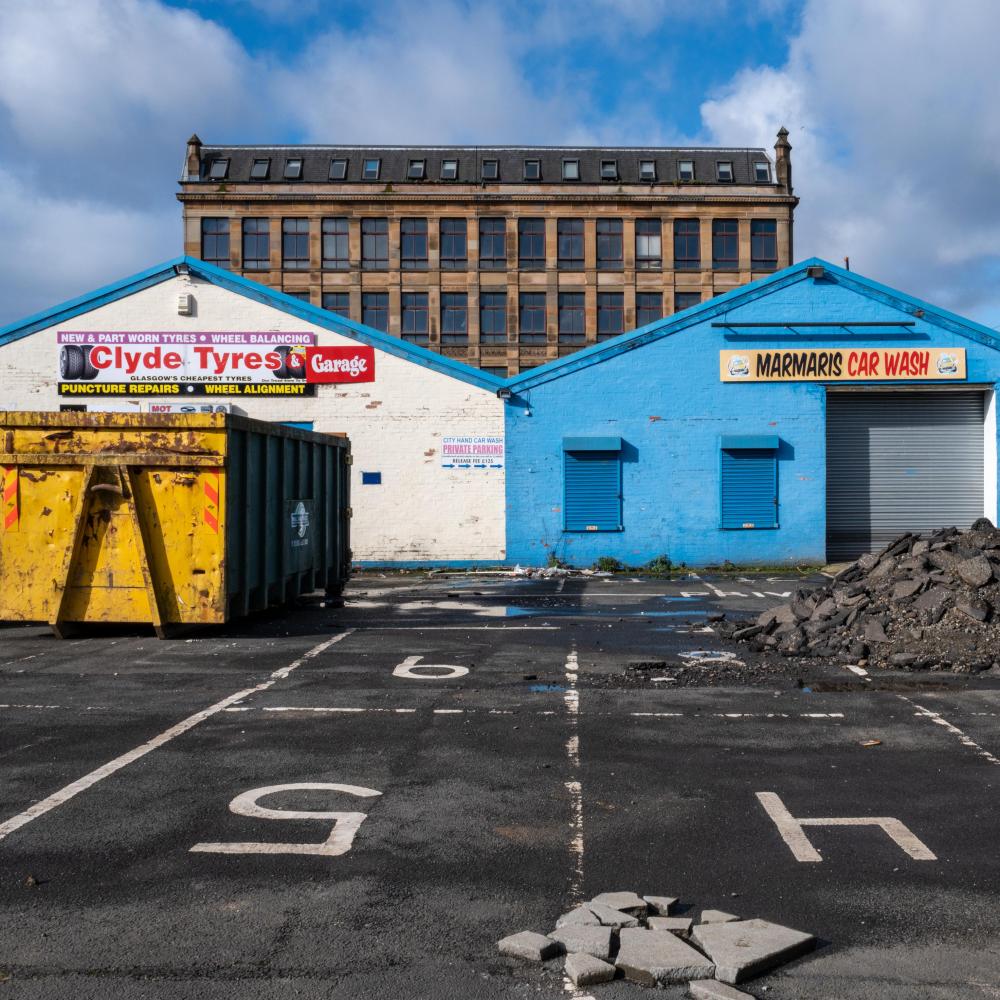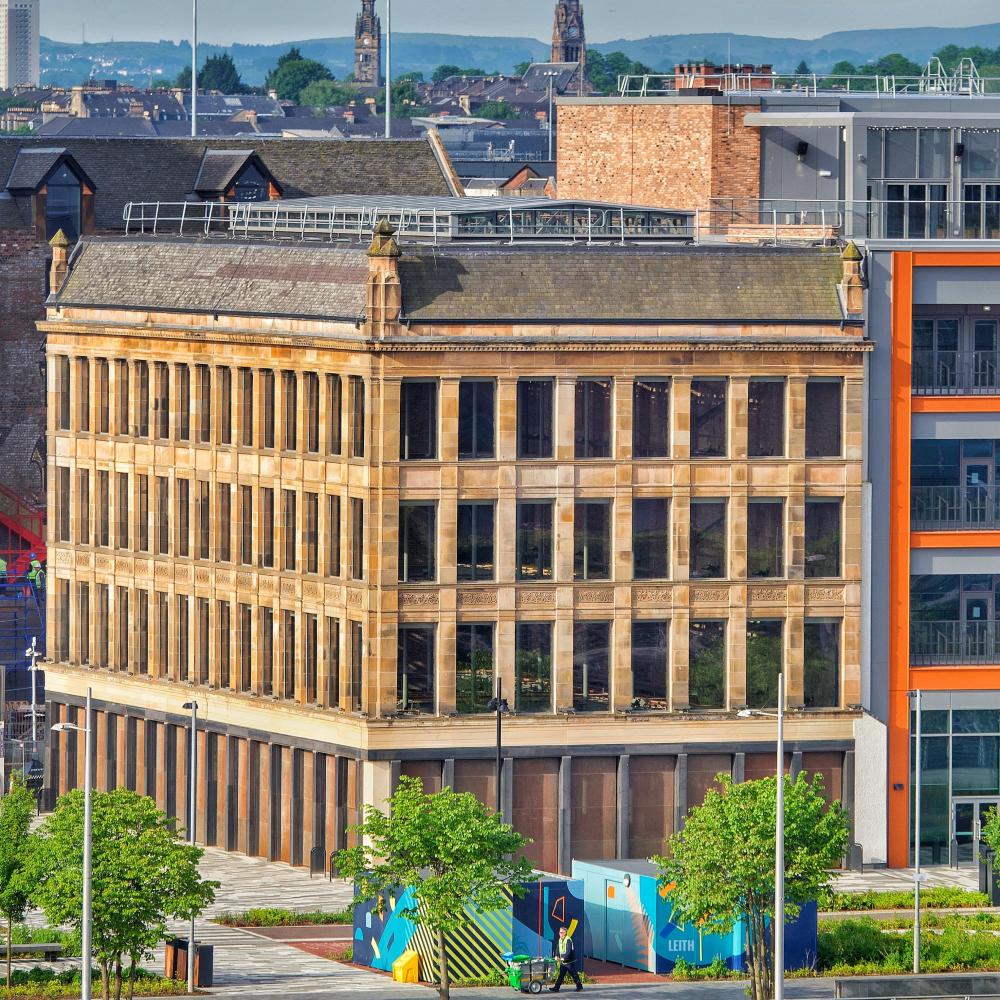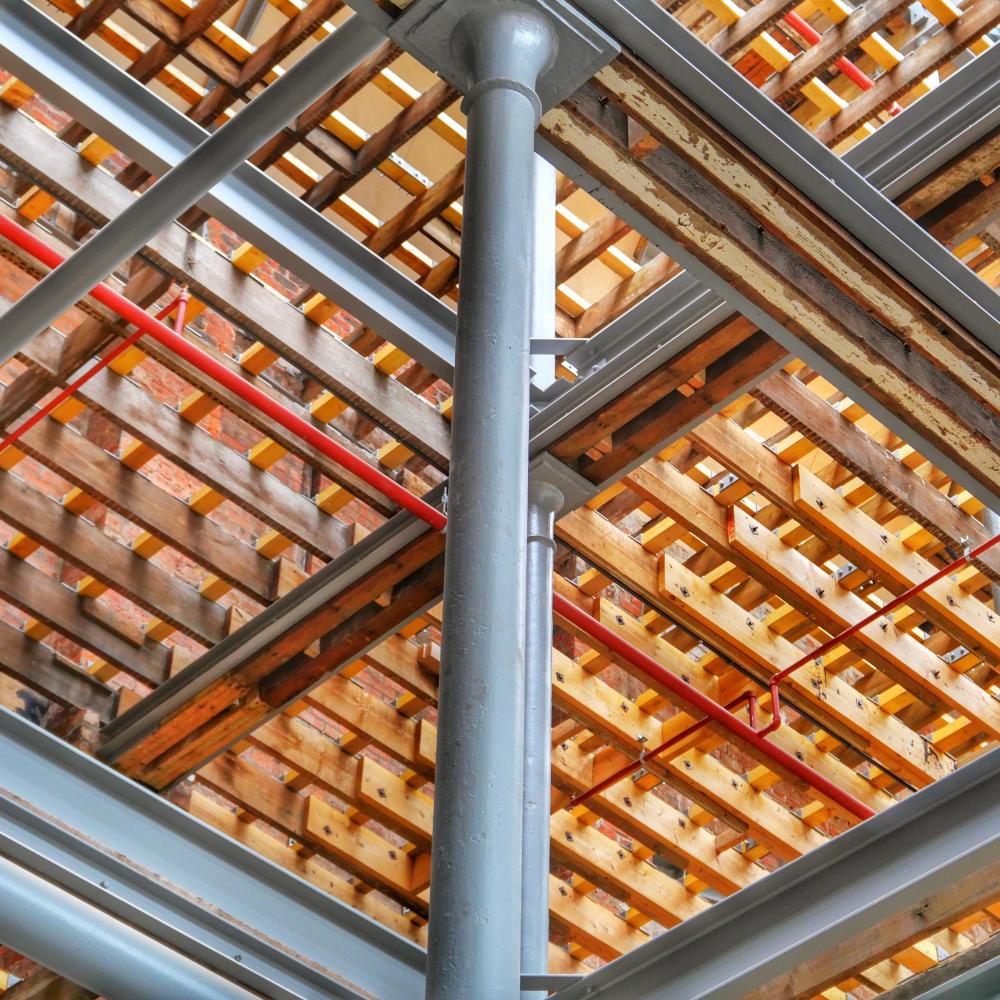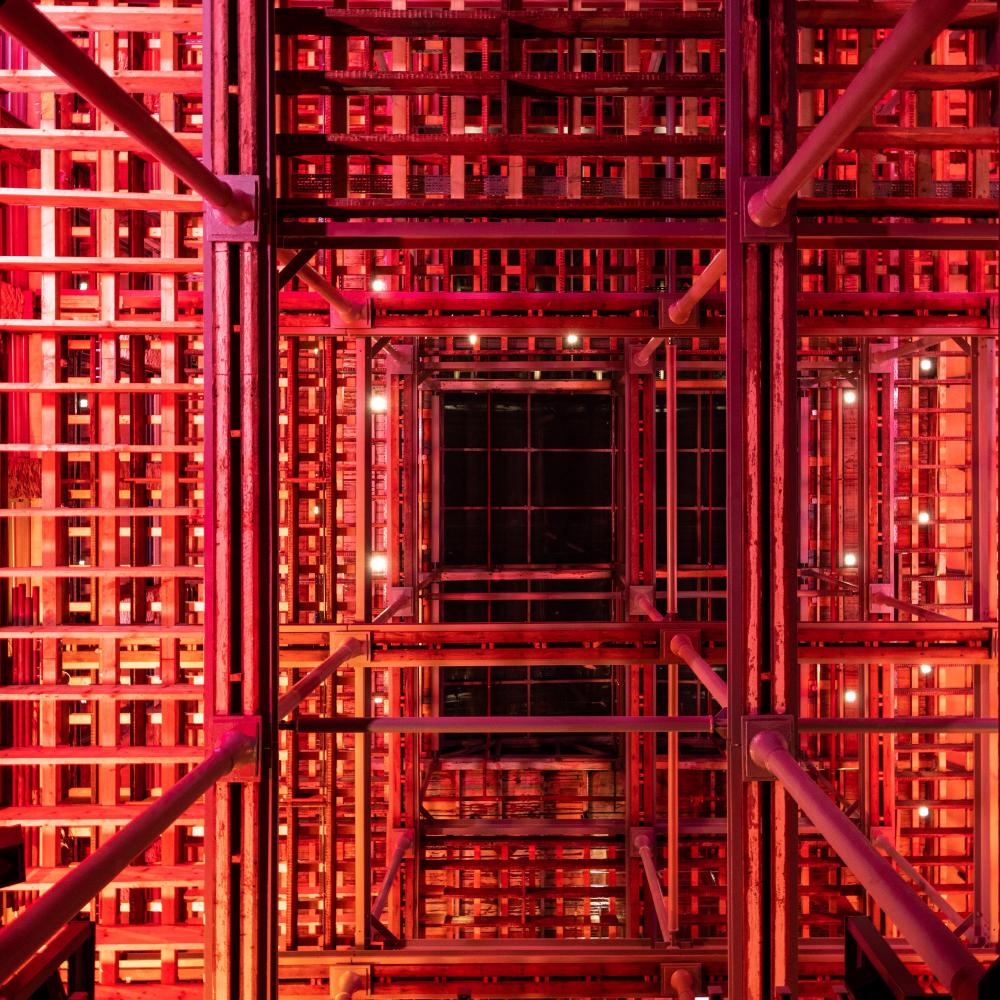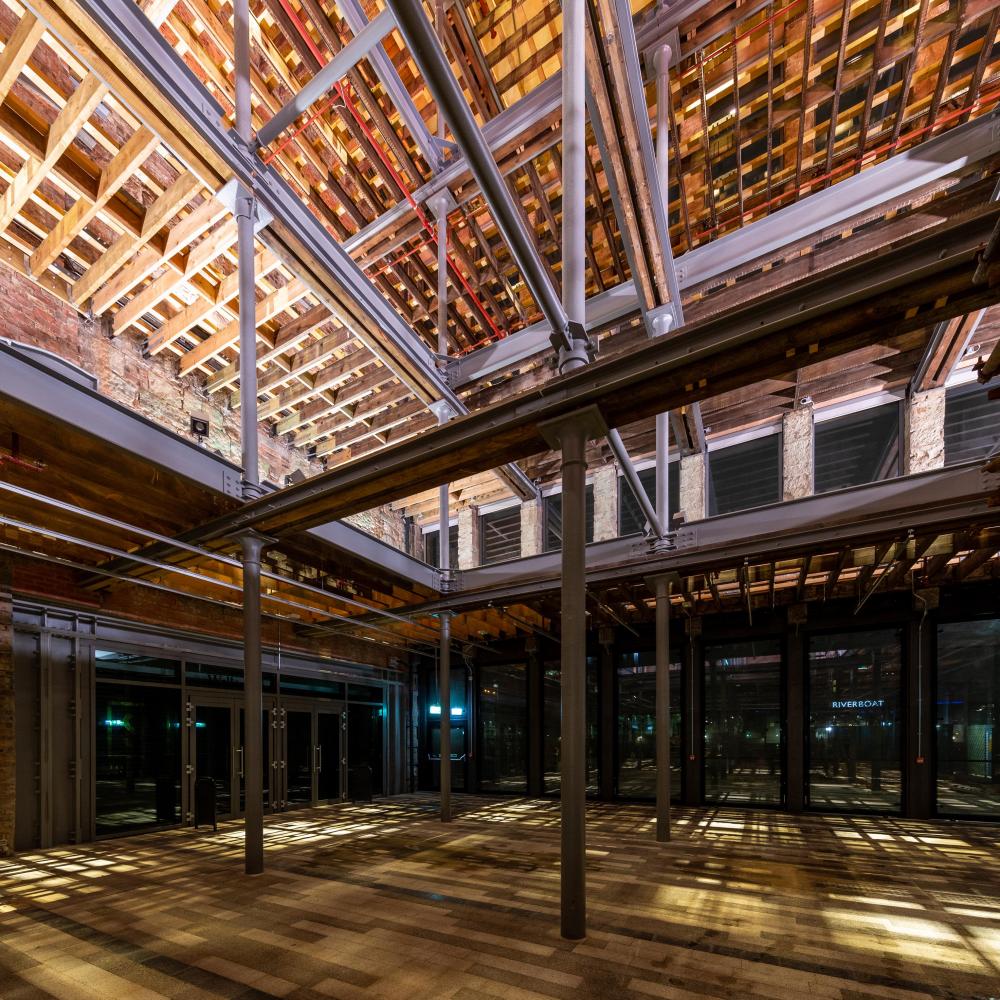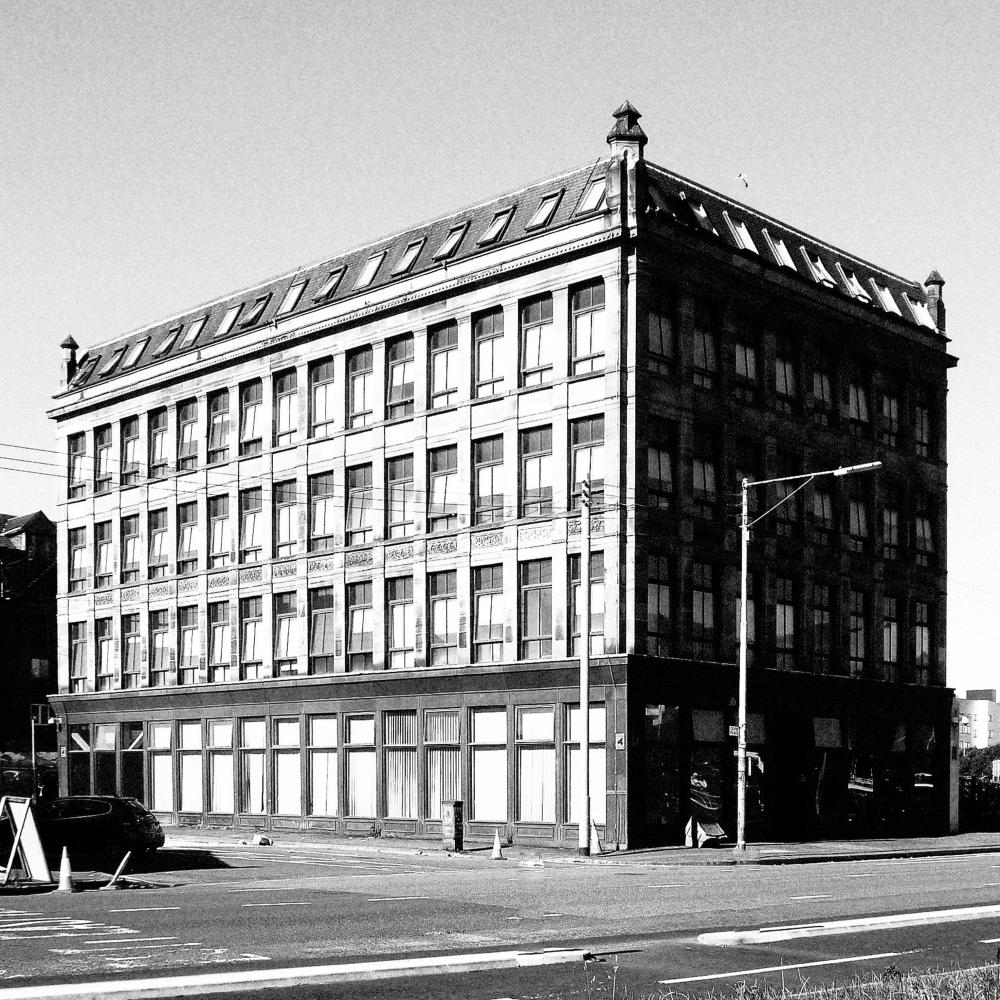Clyde Place House functions as a unique gateway to our Clyde Place development to provide a gathering space for events. This wonderful historic building and its new public space also operates a 'campus town hall' for Barclays Bank. Built in 1878, Clyde House was primarily used from 1883 to just after 1927 as a model lodging house, public house, chronometer maker, and department store. It was an open-plan commercial warehouse typology with exposed cast-iron columns and timber spine beams. It is category B listed, reflecting its rich history and its high-quality and innovative, classically proportioned façade.
Our involvement in Clyde Place House resulted in it not only being saved from demolition but also being conserved in a unique and imaginative basis.
Together with the project engineer, we forensically re-imagined the building, only keeping the essential structure to reveal its 'bones'. The volume that we have created is nothing less than spectacular.
Clyde House and the public space we established have a direct connection with the river and a new linear parkway.
The building's existing architecture helped us define a development scale for the adjacent projects. The simple classical proportions of Clyde Place House provided us with a rhythmic facade grid.
The building is especially dramatic in the evening when it is architecturally lit, the colours changing with the rise and fall of the river's tidal movement.
